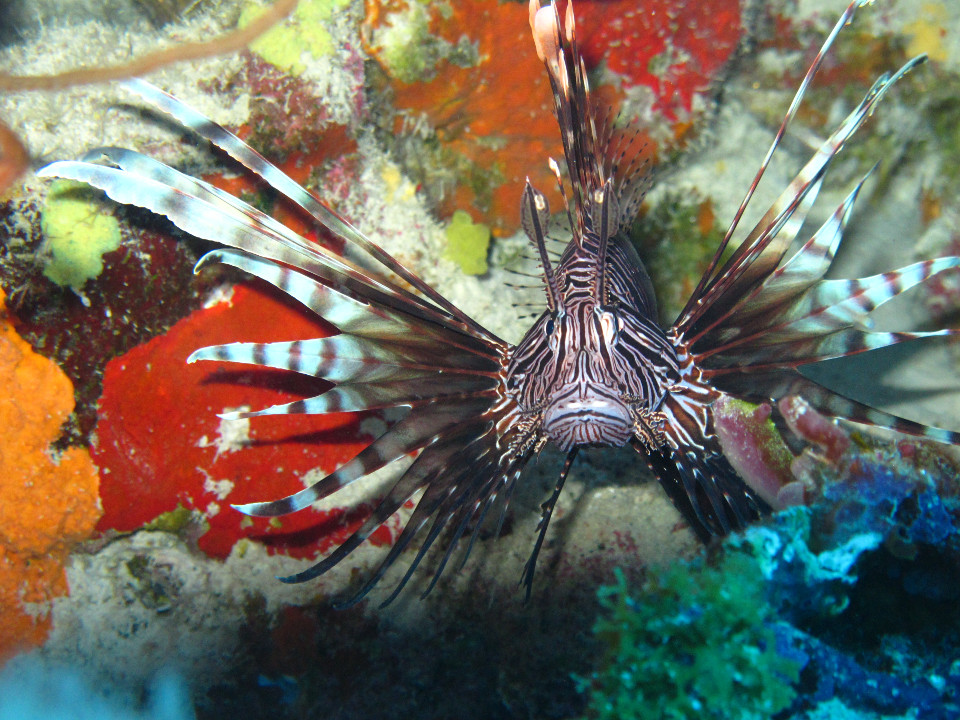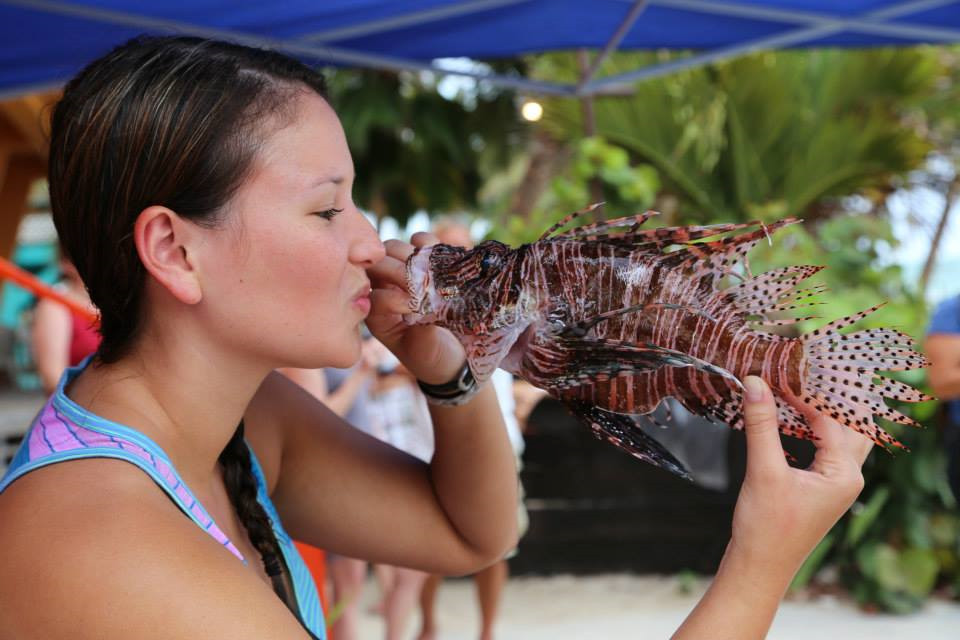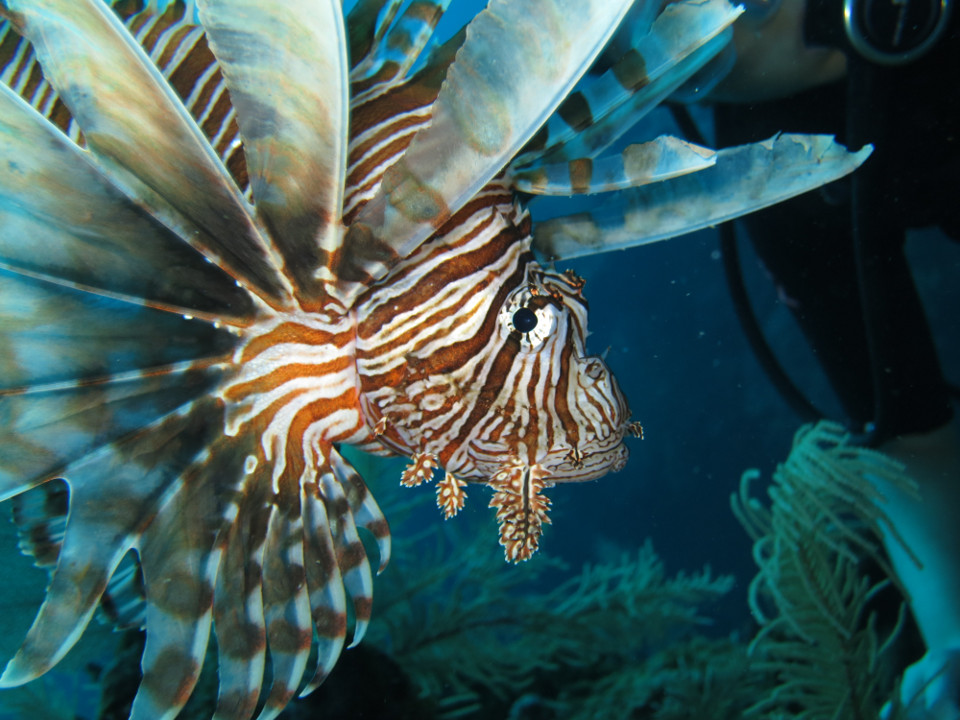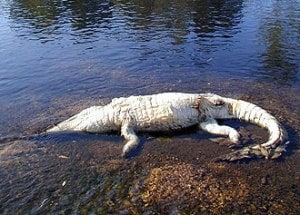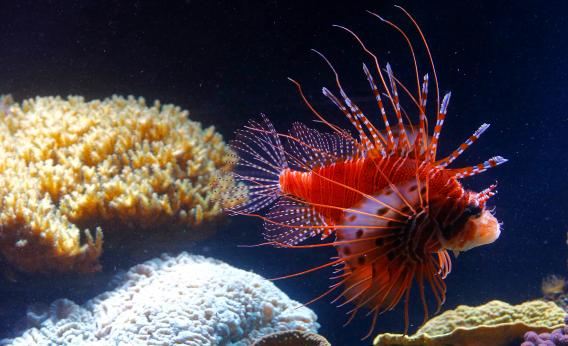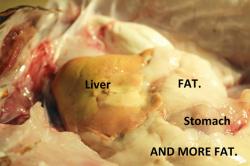Original story by Andrew Darby, The Age
They may be a delicacy but Pacific oysters are also an environmental pest.
The usual tool for dealing with an oyster is a stubby-bladed knife, inserted and twisted to prise the bivalve apart and unlock the seafood treasure inside. Instead, Lindsay James uses a sharpened steel star picket, fitted with a home-made wooden handle for ease of use. That, or a crowbar.
''You just have to break the shell,'' he says. ''And then you've killed it.''

Lindsay James has spearheaded the campaign to rid Tasmania's shores of the feral Pacific Oyster (Crassostrea gigas). Photo: Peter Mathew
James has ''donged'' vast numbers of oysters, specifically feral Pacifics. A spreadsheet kept by the retired Hobart maths teacher shows that he began in 1998 with 600 at one creek mouth in Tasmania.
By 2009 he was leading a group collection of 3.5 tonnes over four days. In recent years he sometimes opted for the notation: ''too numerous to count''.
Since the Pacific oyster was introduced to Australia from Japan by the CSIRO 60 years ago, it has escaped in three states, altering shorelines with an intensity that the rabbit brought to grazing lands.
This flavoursome gourmet treat has now become an environmental hazard. ''They let the genie out,'' James says. ''If you'd broken a billion glass bottles and scattered them along the shore that would be less dangerous, because the sea would gradually wear down the edges. Pacific oyster shells stay razor sharp. These beautiful shorelines are now a disgusting mess.''
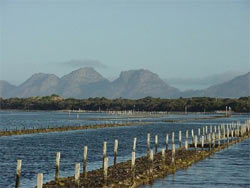
Pacific oyster farm in Coles Bay, Tasmania. Mesa
James, 74, recalls his younger days when he could swim and kayak from shore, or scramble over rocks collecting mussels in the tree-lined backwater of Barnes Bay, on Tasmania's Bruny Island.
Then a marine farm began to cultivate oysters nearby. ''There was a meeting to reassure us there were no worries about oysters heading to shore,'' he says.
But these reassurances were worth little. ''The farm and farmer are long gone, but the whole shoreline is riddled with oysters. Kids can't muck about on it any more.''
When he found oysters emerging at the creek mouth near a family holiday shack at White Beach, on the Tasman Peninsula, James decided to take a stand.
''I was mortified,'' he says. ''I thought it can't end up like Barnes Bay.'' His and other families joined forces to crunch oysters, and for the past 15 summers on low tides they have seen off more. The rocks at White Beach are today navigable by the young. ''My grandkids can still play in the places that my kids played in,'' James says. But this success is limited. Wherever wave intensity is low enough, Pacific oysters cover shorelines and encrust offshore rocks around Tasmania. They have infested the Derwent River in Hobart, covering docksides and jetties.
Last month in the Tamar estuary, a barefooted yachtsman knocked off his boat by the boom could not reach shore through the oyster beds.
Eventually, Launceston's The Examiner reported, rescuers in a dinghy pulled the 67-year-old out of chest-deep water with lacerated feet.
In New South Wales, feral Pacifics are found in all river estuaries south of Port Macquarie. At Port Stephens, near Newcastle, densities are so high that commercial cultivation is allowed. Elsewhere, their ability to settle on and smother the favoured Sydney rock oysters spurred the NSW Department of Primary Industries to declare them a noxious species. Farmers are permitted to grow only sterile triploid Pacifics.
Along the surf-beaten Victorian shoreline, feral Pacifics so far have been unable to gain a foothold. In 1996, a Victorian government inquiry recommended against farming them because of fears about the ability of wild populations to establish themselves, and their potential environmental impacts.

PIRSA’s Heidi Alleway and Michael Sierp destroy wild oysters near Coffin Bay. Photo: PIRSA
But in South Australia, the lesson was slower to be learnt. ''It was thought they wouldn't take off because of the higher salinity levels,'' says Dr Michael Sierp, of Biosecurity SA. Farmed there since the 1980s, feral Pacifics began to appear across the South Australian coast, posing a risk not just to feet and hands, but to biodiversity.
''They outcompete other species,'' Sierp says. ''On an oyster reef, all you find is them, and a few crabs. They can also foul pipeline intakes and jetties, costing a lot in infrastructure maintenance. They scratch and hole vessels. They are quite dangerous.''
Despite their pest status in some areas, feral Pacifics are also morsels of briny brilliance. Farmed Pacific oysters from Coffin Bay, South Australia, regularly win the national competition at the benchmark Sydney Royal Fine Food Show.
The Pacific oyster is the basis of a $60 million to $70 million farm gate industry nationally, and oyster lovers can distinguish between local growing regions and seasons the way others might with fine wines. A South Australian seafood flavour guide describes some as having ''clean ocean, with cucumber and fresh fish notes'' and others with ''intensely sweet ocean, salty and savoury with a hint of asparagus''.
Science from Japan's Watanabe Oyster Laboratory is discovering unexpected health benefits as well.
People fed with its Pacific oyster extract are claimed to report better sleep, greater levels of antioxidants, and, in men, increased sperm concentrations.
So why aren't more people out foraging feral oysters off the rocks?
Truth be told, some do. Across from Lindsay James' childhood Barnes Bay in Tasmania, for example, is a hard-to-reach oyster reef that has been plundered in summer by man and beast. The big old Pacifics chiselled off the rocks there burst in the mouth with the fullness of the entire Southern Ocean.
Attractive though they may be to casual foragers, health authorities warn against eating feral Pacific oysters. Toxic dinoflagellate blooms can concentrate in the shellfish, bringing paralytic or neurotoxic poisoning.
Tasmania's Public Health Service regularly tests its waters and issues warnings against eating wild oysters. It says several cases of mild paralytic poisoning have followed big algal blooms. In an Easter outbreak, about 200 cases of gastroenteritis in Tasmania and Victoria were traced back to a Pacific oyster farm at Dunalley, where stock unwittingly fell foul of a leaking underwater sewage line.
Carriers of illness though they may be, the adaptable Pacific oysters are themselves unharmed by these organisms. Crassostrea gigas (literally the thick-shelled giant oyster, as the Pacific is scientifically known) is even likely to do better than its cousins with climate change.
A 2011 international oyster symposium in Hobart was told that in a late 21st century of elevated ocean temperatures and acidification, the greater metabolic rate and feeding efficiency of the Pacific oyster may be more resilient.
The only thing that seems capable of halting them is a virulent disease, which recently arrived in Australia, called Pacific Oyster Mortality Syndrome.
First detected in sterile farmed Australian Pacifics in Sydney's Georges River in late 2010, the POMS virus had spread to the Parramatta River and then the Hawkesbury by last January, wiping out millions of shellfish. Growers around Australia are keeping an anxious eye on POMS' potential movement.
''We hope it can be contained,'' says Oysters Australia's Bruce Zippel. ''It has the potential to do serious harm if it spreads.''
The disease does not appear to affect Sydney rock oysters, and if Pacifics do die, attention may turn to the reduced, overlooked, native southern mud oyster, Ostrea angasi.
Endemic to southern Australia, the angasi was a staple for Aboriginal people in Tasmania and heavily harvested by colonials in the 19th century.
But a few years after the Pacifics' introduction in the middle of the 20th century, the more robust species replaced angasi populations in such places as the Tamar River, according to a study by Iona Mitchell, for the University of Tasmania.
Meanwhile, the laborious clean-up seems to be the best method of control. Although the scale of infestations in places such as Tasmania and New South Wales make chipping oysters only a temporary local answer, it has succeeded in South Australia.
Michael Sierp led a four-year program, involving all the state's oyster growers, that declared war on feral pacifics from Kangaroo Island to Ceduna.
''We used two tools: a geological hammer, and a generator-driven air chisel,'' he says.
Toiling through four-hour low-tide windows, the teams found they could clear kilometres of coastline.
After breaking the shells open, natural processes would kill the Pacifics. Either they would desiccate in the sun, or be consumed.
''We even found that ants would crawl down the rocks with the ebbing tide to eat them,'' Siep says.
He concluded that Pacifics needed to be grouped in clumps of around 10 to 20 in a small area to keep sustaining themselves. ''As long as you clear about 95 per cent, you've stopped them,'' he says. ''Currently there is no risk they would get out of control.''
